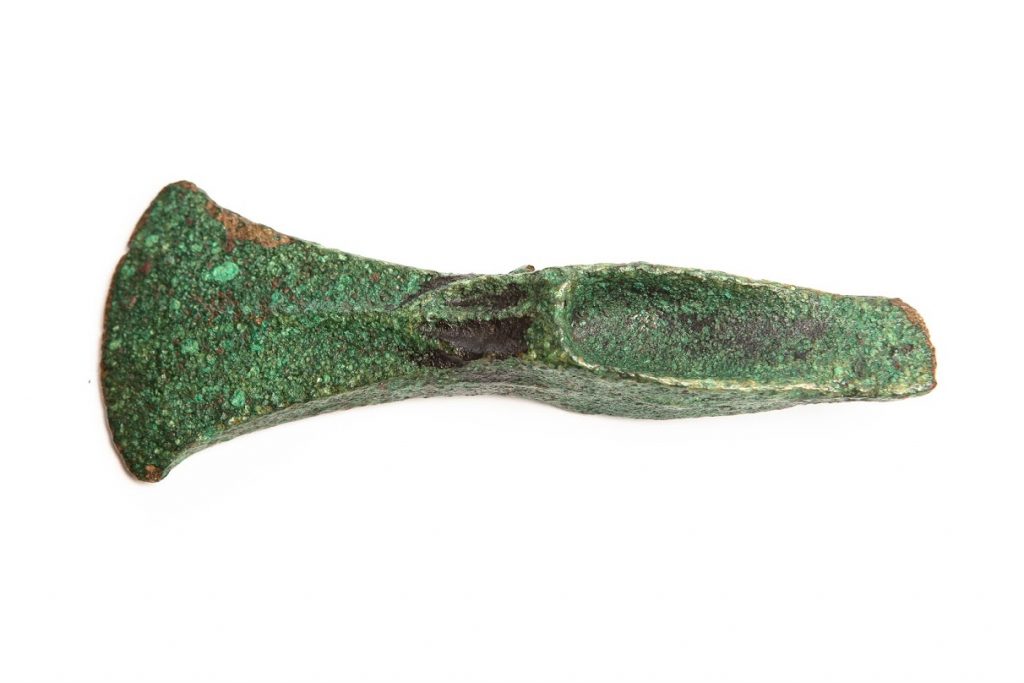
A palstave is a type of axe common in the Middle Bronze Age, made by casting molten bronze into two-part moulds of stone or bronze. This palstave was one of two found in the woods near the river Cegin, below Maesgeirchen. It was found in July 1946 in a mound of earth dumped from the excavation of sites for prefabricated houses in Maesgeirchen, adjoining the cottage of Tyddyn Llwydyn. The finder was the young son of a local resident who presented it to the Museum of the University College of North Wales, Bangor.
The palstave has a single loop, now broken, and is of a well known variety exhibiting what is termed as ‘trident pattern’ of ribs on both faces. It has a slight ‘waist’ right in front of the stop-ridge and the ends of the blade are splayed outwards slightly. Palstaves were made in Bangor around 1300 BC as a palstave of a similar type was found at Deansfield beside the River Adda together with two moulds for casting palstaves (although of different types).
A knowledge of metalworking and mining reached Wales about 2,500 BC, probably from Ireland. Copper was mined on the Great Orme at Llandudno and on Parys Mountain in Anglesey and there is evidence indicating a local production of both ores and finished implements on quite a large scale. Palstaves were the essential workman’s tool of the Middle Bronze Age and the effectiveness of the design was changed and improved over the years.
The earlier flat axes (like those from Llandderfel and Trefriw) were made in a simpler open mould. But the flanged axe from Menai Bridge needed a double mould. The decoration on this fine axe is an indication that metal tools were still rare and individually finished. In contrast the rough finish of the Middle Bronze Age axes (palstaves like the one from Maesgeirchen, Bangor ), show that they are no longer status symbols but everyday working tools.
